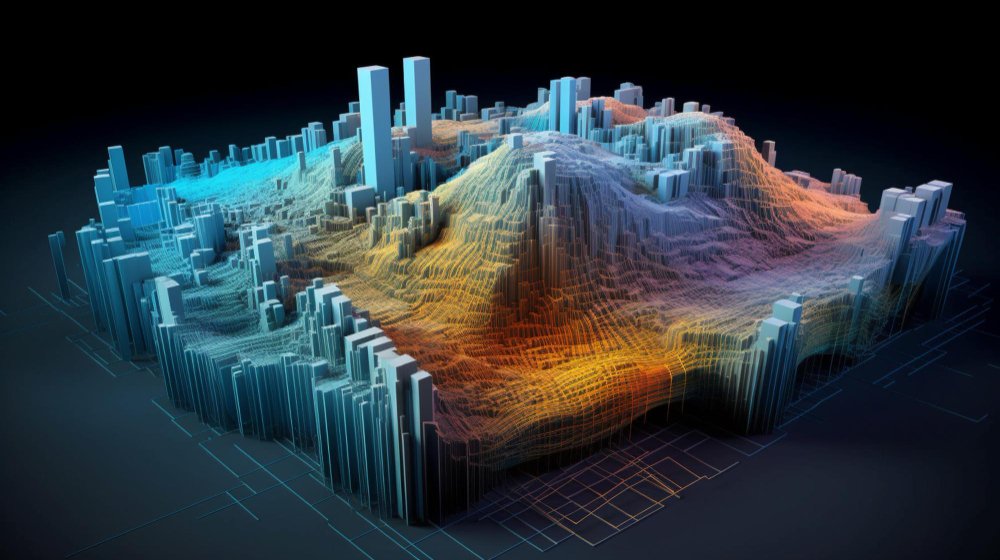Electronic Level Models (DEMs) expect a critical part in Geographic Information Systems (GIS), giving huge information about the World’s surface region in modernized plan. In this blog section, we’ll research what DEMs are, the means by which they are used in GIS applications, and their significance in various endeavors.
What is a Digital Elevation Model (DEM)?
A Digital Elevation Model is a digital representation of the Earth’s surface topography, typically represented as a grid of elevation values. DEMs catch the height of territory elements like mountains, valleys, waterways, and fields, permitting GIS experts to imagine and break down the scene in three aspects.
Types of DEMs
There are several types of DEMs available, each derived from different data sources and collection methods:
LiDAR DEMs: Light Detection and Ranging (LiDAR) technology uses laser pulses to measure the elevation of the Earth’s surface with high accuracy and resolution.LiDAR DEMs are viewed as one of the most dependable height datasets and are usually utilized in GIS applications requiring exact landscape data.
SRTM DEMs: The Bus Radar Geology Mission (SRTM) directed by NASA gathered height information utilizing radar sensors on board the Space Transport Attempt. SRTM DEMs give worldwide inclusion generally high spatial goal, making them broadly utilized in different GIS applications.
ASTER GDEM: The High level Spaceborne Warm Outflow and Reflection Radiometer (ASTER) Worldwide Advanced Rise Model (GDEM) is another satellite-based height dataset got from sound system symbolism caught by the ASTER sensor locally available the Land satellite. ASTER GDEM furnishes worldwide inclusion with moderate goal and is appropriate for local scale investigation.
Topographic Maps: Customary geographical guides, delivered by studying and cartographic offices, are frequently used to make DEMs by digitizing form lines and inserting rise values. While less precise than LiDAR or satellite-based DEMs, geographical guides stay significant wellsprings of rise information, particularly in regions lacking other datasets.
Applications of DEMs in GIS
Advanced Height Models are generally utilized in GIS applications across different ventures because of their adaptability and capacity to give point by point territory data. A few normal applications include:
Terrain Analysis: DEMs are utilized to investigate territory qualities like slant, angle, ebb and flow, and landscape roughness, which are fundamental for land the executives, ecological preparation, and normal asset the board.
Hydrological Modeling: DEMs assume a vital part in hydrological displaying by depicting watersheds, recognizing waste examples, and assessing stream collection, stream organizations, and flood risk regions.
Urban Planning: In metropolitan preparation, DEMs are utilized to evaluate site appropriateness, imagine metropolitan morphology, examine viewshed and horizon, and mimic metropolitan advancement situations.
Precision Agriculture: DEMs are used in accuracy horticulture to dissect landscape changeability, upgrade field seepage, plan water system frameworks, and survey soil disintegration risk, prompting further developed crop yield and asset effectiveness.
Infrastructure Development: DEMs are fundamental for foundation advancement ventures, for example, street and railroad arranging, pipeline steering, and site determination for framework offices, guaranteeing ideal arrangement and limiting development costs.
Challenges and Considerations
While Computerized Rise Models offer important experiences into landscape qualities, they additionally present specific difficulties and contemplations:
Data Quality and Accuracy: The precision of DEMs relies upon variables, for example, information source, assortment strategy, spatial goal, and handling methods. It’s fundamental to survey the quality and precision of DEM datasets prior to involving them for investigation or direction.
Data Preprocessing: DEM datasets frequently require preprocessing steps, for example, resampling, sifting, and territory adjustment to upgrade their quality and reasonableness for explicit applications.
Data Integration: Incorporating DEMs with different GIS datasets, for example, ethereal symbolism, land cover information, and foundation layers, requires cautious thought of direction frameworks, projection, and spatial arrangement to guarantee exact investigation and perception.
Data Storage and Processing: High-goal DEM datasets can be enormous in size and require significant capacity and computational assets for handling and examination. It’s vital to have satisfactory framework and programming apparatuses to deal with huge scope DEM datasets proficiently.
Discover the transformative impact of AI technology on business growth and efficiency in our latest blog post!
Conclusion
Advanced Rise Models are important resources in Geographic Data Frameworks, giving itemized data about territory height and geology. From landscape examination and hydrological displaying to metropolitan preparation and accuracy agribusiness, DEMs find applications across different enterprises, driving informed independent direction and practical turn of events. By grasping the qualities, applications, and difficulties of DEMs, GIS experts can tackle the force of height information to resolve complex spatial issues and make noteworthy bits of knowledge for many applications.



